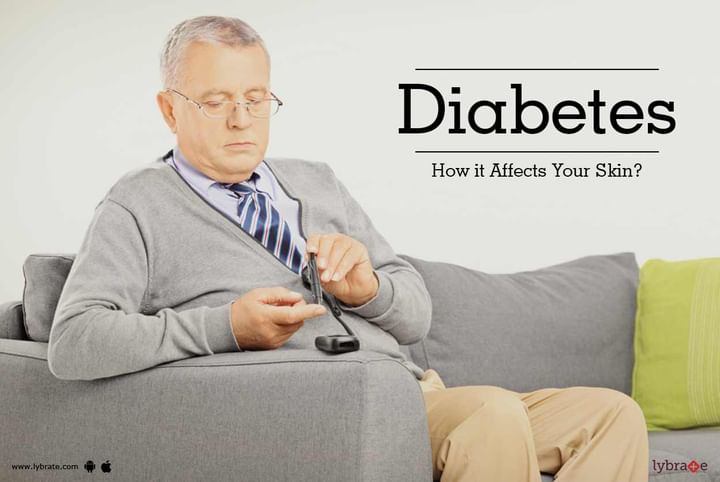Get the App
For Doctors
Login/Sign-up
Last Updated: Jan 10, 2023
BookMark
Report
Diabetes - How it Affects Your Skin?
Diabetes is a serious disease, but if properly managed is not life threatening. Diabetes can be explained as the body’s inability to regulate insulin production. This leads to fluctuations in blood sugar levels. This disease affects every part of the body including the skin. For some people, a rash is among the first few symptoms of diabetes. Most diabetic patients suffer from a skin condition at some point or the other. Here are a few common skin ailments that affect diabetic patients.
- Bacterial infections: A weakened immune system makes diabetics more vulnerable to bacterial infections than normal. These bacterial infections can be typically seen in the form of styles on the eyelid, boils, carbuncles and nail infections. They usually make the skin around the infected area red, inflamed and painful. Most skin bacterial skin ailments can be treated with antibiotic creams and pills.
- Fungal infections: One of the most common fungal infections that diabetic patients suffer from is known as Candida albicans. This ailment is characterised by a red, itchy rash that is surrounded by small blisters. It is caused by yeast-like fungus and usually found in moist areas like the armpits or between the toes. Other fungal infections that affect diabetic patients include ringworm, jock itch, athlete’s foot and vaginal yeast infections.
- Itchy skin: Diabetics often suffer from itchiness that could be triggered by yeast infections, dry skin and poor circulation. People with poor circulation will find their calves and feet to be the itchiest part of the body, While poor circulation and yeast infections may need medical attention, dry skin can be easily treated by keeping the skin internally and externally hydrated along with the use of a mild moisturising soap.
- Vitiligo: This is a skin condition where the melanin producing cells in the skin are destroyed. This leads to a patchy appearance that can be typically seen on the hands, face and chest. Vitiligo is considered to be an autoimmune disease like diabetes and has no known cause or cure. Sunscreen is a must for diabetic patients suffering from vitiligo as the unpigmented skin has no protection from UV radiation.
- Diabetic blisters: Patients with severe diabetes may also suffer from diabetic blisters. These blisters usually occur on the extremities of the body and resemble blisters caused by burns. They are usually pain-free and heal on their own.
- Disseminated granuloma annular: This condition is characterised by a ring or arc shaped areas on the skin. They can usually be seen on the fingers and ears but may also occur in the chest and abdomen. This rash may be reddish or skin coloured. Medical treatment is not generally required for this condition. If you wish to discuss about any specific problem, you can consult an endocrinologist.



+1.svg)
